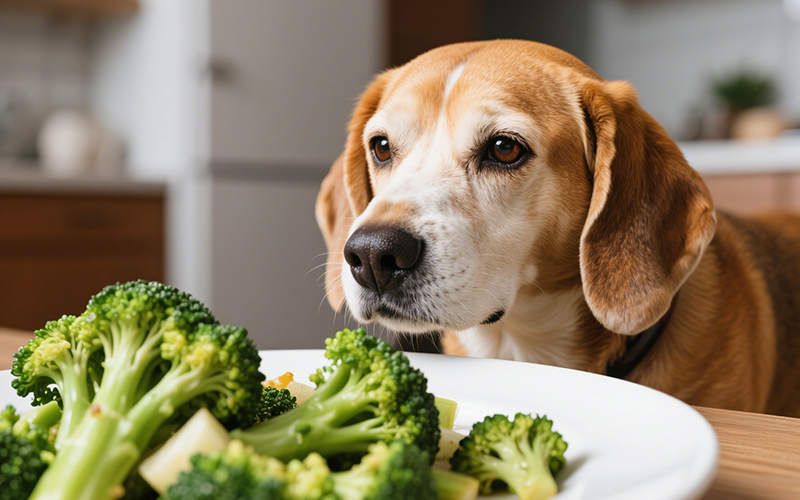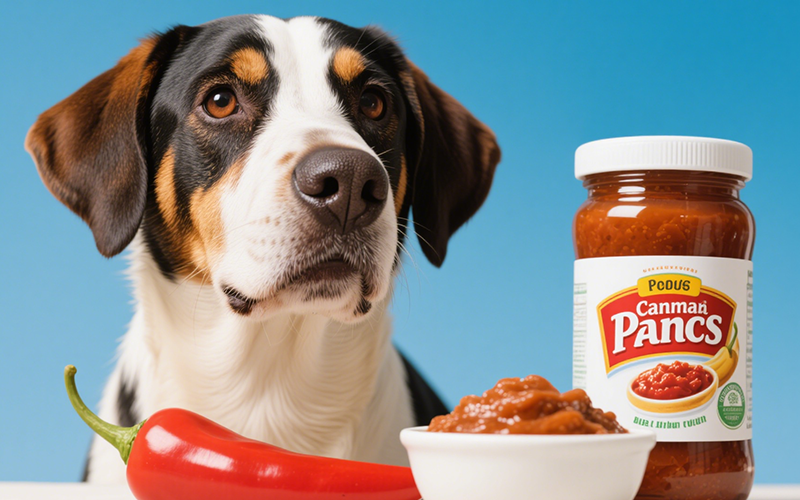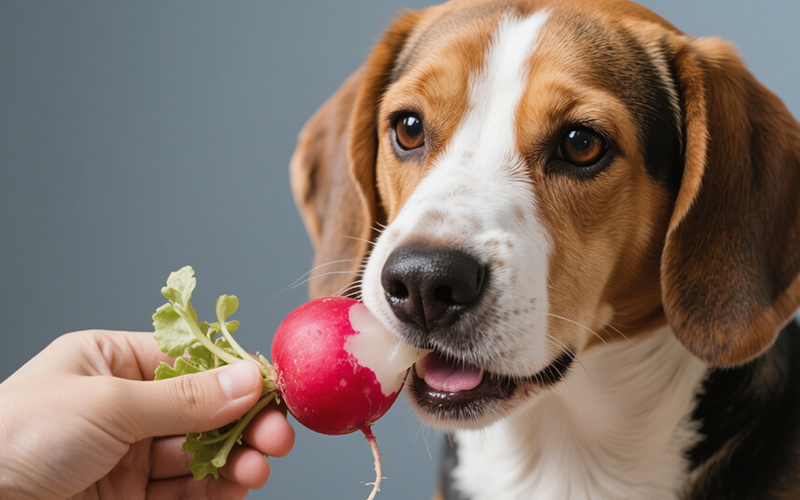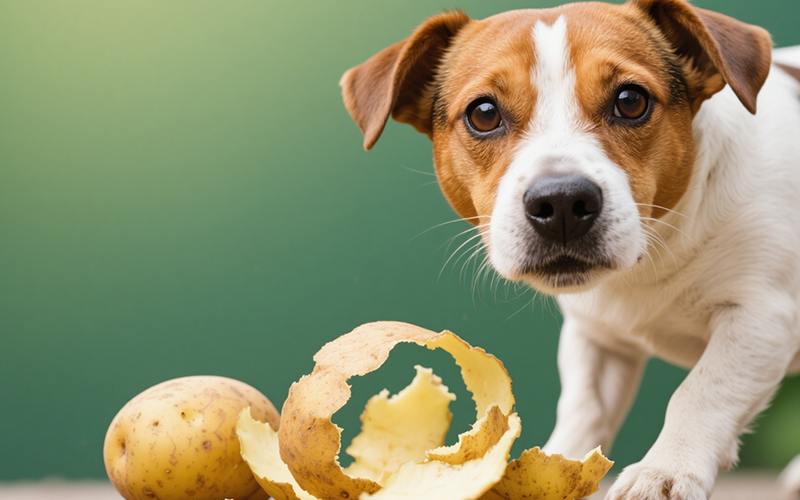Can Dogs Eat Cooked Broccoli? Vet-Approved Guide to Benefits, Risks & Safe Serving
- 14 Apr 2025 10:52
As health-conscious pet parents, we often wonder if the nutritious foods we enjoy are suitable for our canine companions. Broccoli, a cruciferous vegetable lauded for its health benefits in humans, is a prime example. You're steaming some broccoli for dinner, and those familiar puppy-dog eyes are fixed on you. This naturally leads to the question: can dogs eat cooked broccoli? The answer is generally **yes**, plain cooked broccoli is safe for most dogs in moderation and can even offer some health advantages. However, it's not a simple free-for-all. There are important considerations regarding specific compounds in broccoli, preparation methods, serving sizes, and potential risks that must be understood to ensure safe feeding.
This comprehensive guide, informed by veterinary nutritional principles and adhering to Expertise, Authoritativeness, and Trustworthiness (E-E-A-T) standards, will thoroughly explore the world of cooked broccoli for dogs. We'll cover its nutritional profile, the benefits it offers, the crucial risks (including isothiocyanates and choking hazards), safe preparation methods, and appropriate portion sizes, helping you make informed decisions for your furry friend's health.

What Exactly Is Broccoli?
Broccoli (Brassica oleracea var. *italica*) is a member of the cabbage family (Brassicaceae), alongside kale, cauliflower, and Brussels sprouts. It's characterized by its green flowering head (florets) branching from a thick, edible stalk. Both parts are consumed by humans, but they present slightly different considerations when feeding to dogs, especially regarding texture and specific compounds.
Is Cooked Broccoli Generally Safe for Dogs?
Yes, plain cooked broccoli is widely considered safe and non-toxic for dogs by veterinarians. Unlike foods containing inherently poisonous substances like xylitol or theobromine (in chocolate), broccoli doesn't harbor acute toxins. When prepared correctly (cooked and plain) and offered in appropriate quantities, it can be a healthy addition to their treat repertoire.
However, its safety is conditional:
Preparation Method:** Absolutely crucial. Plain cooking is key; added fats, seasonings, garlic, or onions are dangerous.
Quantity:** Strict moderation is essential due to specific compounds and fiber content.
Plant Part:** Florets and stalks carry different primary risks (gastric upset vs. choking).
Individual Sensitivity:** Some dogs may experience gas or digestive upset.
The most significant concern specific to broccoli involves compounds called isothiocyanates, primarily found in the florets.
Nutritional Benefits of Cooked Broccoli for Dogs
When served appropriately, plain cooked broccoli can provide valuable nutrients as a low-calorie supplement:
Vitamin Powerhouse:
Vitamin K: Essential for blood clotting mechanisms and plays a role in bone health. Broccoli is exceptionally rich in Vitamin K.
Vitamin C: A potent antioxidant supporting immune function and collagen production. While dogs synthesize their own, dietary Vitamin C can be beneficial.
Vitamin A (Beta-carotene): Important for vision, skin, coat, and immune health.
Folate (Vitamin B9): Vital for cell growth, DNA synthesis, and metabolic functions.
Mineral Content: Provides potassium (important for nerve and muscle function), calcium and phosphorus (for bones), and manganese.
High in Dietary Fiber: Aids digestive regularity, promotes healthy gut bacteria, and contributes to feelings of fullness, potentially helping with weight management.
Rich in Antioxidants: Contains compounds like sulforaphane and various flavonoids that help combat oxidative stress and inflammation, protecting cells from damage.
Low Calorie & Low Fat: Makes it a suitable healthy treat option compared to many commercial snacks, fitting well into weight management plans.
These benefits of cooked broccoli for dogs make it a potentially worthwhile treat, provided risks are managed.
Risks and Concerns: Why Moderation and Proper Prep Are Vital
Despite the health halo, feeding cooked broccoli isn't risk-free. Understanding these potential issues is key:
1. Isothiocyanates & Gastric Irritation (The Main Broccoli-Specific Risk)
Broccoli florets contain natural compounds called isothiocyanates. In small amounts, these might offer health benefits, but in dogs, excessive intake can cause significant **gastric irritation**.
Effect: These compounds can irritate the lining of the stomach and intestines.
Symptoms: Mild upset (gas) can occur even with moderate amounts. Larger quantities (generally exceeding 10-25% of daily intake, as per ASPCA guidelines) can lead to more severe nausea, vomiting, diarrhea, and abdominal discomfort.
Location: Isothiocyanates are more concentrated in the **florets** (flower heads) than the stalks.
Takeaway: This risk underscores why broccoli must remain a small treat, especially the florets, and never a main meal component.
2. Digestive Upset (Fiber Overload)
Even without considering isothiocyanates, the high fiber content in broccoli can cause problems if dogs eat too much or aren't used to it.
Symptoms: Increased flatulence (gas), bloating, loose stools, or diarrhea.
Mitigation: Introduce cooked broccoli very slowly and in tiny amounts initially.
3. Choking Hazard (Mainly Stalks)
The thick, fibrous stalks of broccoli present a notable choking risk, especially if given raw or in large pieces.
Problem: Dogs might gulp large chunks, leading to obstruction of the esophagus or airway.
Solution: Cooking softens the stalks, making them safer. However, even cooked stalks should always be **chopped into small, bite-sized pieces** to eliminate this danger.
4. Goitrogens & Thyroid Function (Minor Concern)
As a cruciferous vegetable, broccoli contains goitrogens, compounds that *in very large, chronic quantities* could potentially interfere with thyroid hormone production. For the small amounts recommended as occasional treats, this is generally considered a negligible risk for healthy dogs. Consult your vet if your dog has hypothyroidism before feeding any goitrogenic vegetables regularly.
5. Harmful Preparation Methods (A Major Risk!)
This is often where things go wrong. Broccoli prepared for humans is frequently unsafe for dogs:
Fats & Oils (Butter, Oil): Trigger pancreatitis risk, add unhealthy fats and calories.
Garlic & Onions: Often paired with broccoli, these are **TOXIC** to dogs, damaging red blood cells.
Salt & Seasonings: Excess salt is harmful; other spices can cause irritation.
Cheese Sauce: High in fat, salt, and potentially problematic dairy for lactose-intolerant dogs.
Therefore, the answer to "can dogs eat cooked broccoli?" is yes, but *only* if it's cooked completely plain.
Focusing on Cooked Broccoli: Why It's Often Preferred
While dogs can technically eat raw broccoli (finely chopped), cooking offers distinct advantages for safety and tolerance:
Easier Digestion: Cooking breaks down some of the tough fibers, making it gentler on the digestive system and potentially reducing gas and bloating compared to raw.
Reduced Choking Risk: Cooking significantly softens the stalks, making them less of a choking hazard (though chopping is still essential).
Potentially Milder Isothiocyanate Effect: Some studies suggest cooking might slightly alter or reduce the immediate impact of isothiocyanates, possibly making it less irritating for some dogs, though the compounds are still present.
Improved Palatability (for some): Some dogs may prefer the softer texture of cooked broccoli.
Best Cooking Method: Steaming plain broccoli lightly is often considered ideal. It softens the vegetable effectively while minimizing the loss of water-soluble vitamins (like Vitamin C) compared to boiling. Boiling plain is also acceptable.
Therefore, preparing steamed broccoli for dogs is generally the recommended approach.
Florets vs. Stalks When Cooked: What to Prioritize?
Even when cooked, the different parts require slightly different considerations:
Cooked Florets: Softer and easier to chew, low choking risk. However, they contain higher levels of **isothiocyanates**, so portion control is most critical here to avoid gastric upset.
Cooked Stalks: Lower in isothiocyanates (less likely to cause upset from these compounds). BUT, they remain fibrous even when cooked and **must be chopped small** to prevent choking.
You can feed both parts, cooked plain and chopped appropriately, but be mindful of limiting the florets due to isothiocyanates and ensuring stalks are cut very small.
Safe Preparation Guide: How to Cook Broccoli for Your Dog
Follow these steps precisely to prepare cooked broccoli safely:
Wash Well: Rinse fresh broccoli thoroughly under cold water.
Chop Appropriately: Cut both florets and stalks into small, bite-sized pieces suitable for your dog's size (e.g., thumbnail-sized or smaller). Err on the side of smaller, especially for stalks.
Cook Plain (Steam or Boil):**Absolutely NO salt, oil, butter, garlic, onion, cheese, or seasonings.**
Steaming (Preferred): Steam the chopped pieces for 5-8 minutes, or until tender-crisp (easily pierced with a fork).
Boiling: Boil the chopped pieces in plain water for a few minutes until tender. Drain well.
Cool Completely: Allow the cooked broccoli to reach room temperature before serving.
Introduce Slowly: Give just one or two small pieces the first time.
This ensures the cooked broccoli for your dog is safe and easy to eat.
Serving Size: How Much Cooked Broccoli Can Dogs Eat?
Strict moderation is key due to isothiocyanates and fiber.
10% Treat Rule: Adhere to the guideline that treats should not exceed 10% of daily calories. Since broccoli is low-cal, focus on volume and frequency.
ASPCA Isothiocyanate Guideline: Keeping total broccoli intake well below 10% of the diet minimizes the risk of gastric irritation; exceeding 25% is highly likely to cause problems.
Frequency: Offer as an occasional treat (e.g., 2-3 times per week) rather than daily.
Portion Examples (Plain Cooked, Chopped Broccoli per serving):**Start with less and adjust based on tolerance. Remember these are *treat* amounts.
Toy Breeds: 1-2 small pieces
Small Breeds: ~1 teaspoon
Medium Breeds: ~1-2 tablespoons
Large Breeds: ~2-3 tablespoons
Always consult your vet for personalized advice, especially if your dog has health issues.
Signs of Trouble: When to Stop Feeding Cooked Broccoli
Contact your veterinarian if your dog consumes broccoli cooked with harmful ingredients or shows any of the following signs after eating plain cooked broccoli:
Excessive or persistent vomiting or diarrhea
Noticeable abdominal discomfort or pain (hunched, restless)
Extreme lethargy
Loss of appetite
Choking or difficulty breathing (Emergency!)
Signs of allergy (rare: itching, swelling, hives)
While generally safe in moderation, monitor for adverse reactions.
Table: Cooked Broccoli vs. Other Safe Veggies
| Vegetable (Cooked, Plain) | Key Benefits | Primary Cautions |
| Broccoli | Vitamins (K, C, A), Fiber, Antioxidants | Isothiocyanates (GI upset risk), Stalks=Choking Hazard, Gas. Needs strict moderation. |
| Carrots | Vitamin A, Fiber, Low Calorie | Higher sugar than greens; can be choking hazard raw if large pieces. |
| Green Beans | Fiber, Vitamins, Very Low Calorie | Generally very safe and well-tolerated. Ensure plain. |
| Sweet Potatoes (Peeled) | Vitamins (A, B6), Fiber, Antioxidants | Higher calorie/starch; feed in moderation; must be cooked & peeled. |
| Pumpkin (Plain Puree) | Excellent for Digestion, Fiber, Vit A | Use 100% pumpkin, NOT pie filling. Very safe. |
Need Quick Pet Health & Safety Info? Try PettureX!
Figuring out the nuances of feeding human foods safely can sometimes feel complex. For quick access to information and helpful AI-powered tools, the PettureX App is designed to support pet parents:
Food & Plant Identification: Use image recognition to get general safety information on common household items and foods like broccoli.
AI Symptom Analysis: If your pet shows signs of digestive upset or other symptoms, input the details for preliminary AI insights.
24/7 AI Vet Consultation: Get immediate answers to questions such as, "How much cooked broccoli is safe for a puppy?" or seek guidance on managing minor health concerns anytime.
PettureX offers convenient access to valuable information. Remember, however, it is a supplementary tool and **cannot replace professional veterinary diagnosis, treatment, or personalized nutritional advice.** Always consult your local veterinarian for medical concerns.
Conclusion: Cooked Broccoli - A Safe Treat When Handled Wisely
In conclusion, the answer to "can dogs eat cooked broccoli?" is yes, provided it is prepared plain, chopped appropriately, and fed in strict moderation.
Key Takeaways:
Benefits: Offers vitamins, minerals, fiber, and antioxidants.
Safety First: Must be **cooked plain** (steaming preferred) with NO oil, salt, garlic, onion, or seasonings.
Moderation is Crucial: Due to **isothiocyanates** (risk of GI upset, mainly in florets) and fiber content. Keep portions small and infrequent (less than 10% of daily calories).
Chop Stalks Carefully: Cooked stalks are safer than raw but still need to be chopped small to prevent choking.
Introduce Slowly: Monitor for gas or diarrhea.
Safer Than Raw (Generally):** Cooked is easier to digest and less of a choking hazard.
By respecting the potential risks and adhering to safe preparation and portion guidelines, plain cooked broccoli can be a healthy, low-calorie snack to share occasionally with your canine friend. Always prioritize their safety and consult your veterinarian if you have specific concerns about their diet.
Related

Ranch Dressing Dilemma: Can Dogs Safely Indulge? A Deep Dive into Why It's a Bad Idea
- 23 Apr 2025
Radish Bites for Your Buddy? A Vet-Reviewed Guide on Whether Dogs Can Eat Radishes
- 22 Apr 2025
Potato Peels for Pooches? Unpeeling the Risks and Facts for Dog Owners
- 22 Apr 2025
Crunchy Curiosity: Can Dogs Safely Snack on Pork Rinds? A Deep Dive
- 21 Apr 2025
Pomegranate Seeds and Pooches: A Deep Dive into Whether Dogs Can Safely Indulge
- 21 Apr 2025
Can Dogs Eat Peaches? Vet Explains Benefits, Cyanide Risks & Safe Serving
- 16 Apr 2025
Can Dogs Eat Mulberries? Vet Explains Safety, Benefits & Potential Risks
- 16 Apr 2025
Can Dogs Eat Mozzarella? Vet Explains the Cheesy Truth (Risks & Benefits)
- 16 Apr 2025
Can Dogs Eat Mango Skin? Vet Explains Why It's a Risky Chew!
- 16 Apr 2025
Can Dogs Eat Maple Syrup? The Sugary Truth & Why Vets Advise Against It
- 16 Apr 2025
